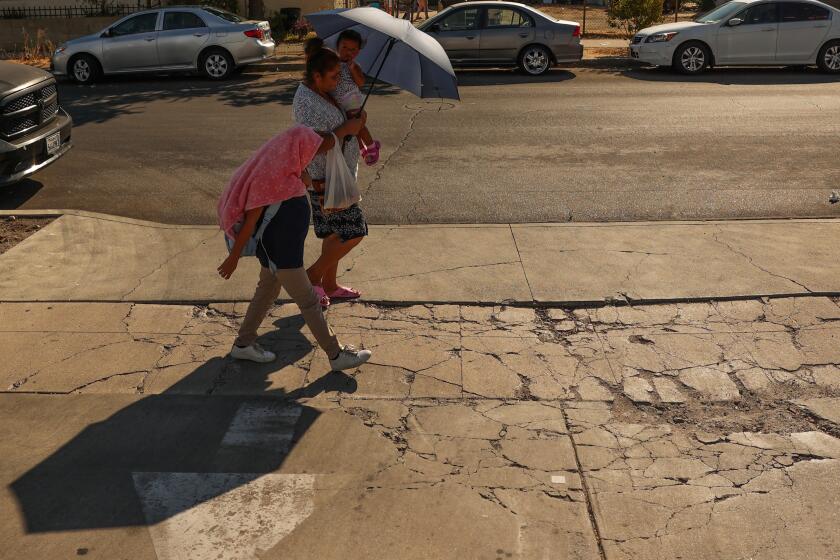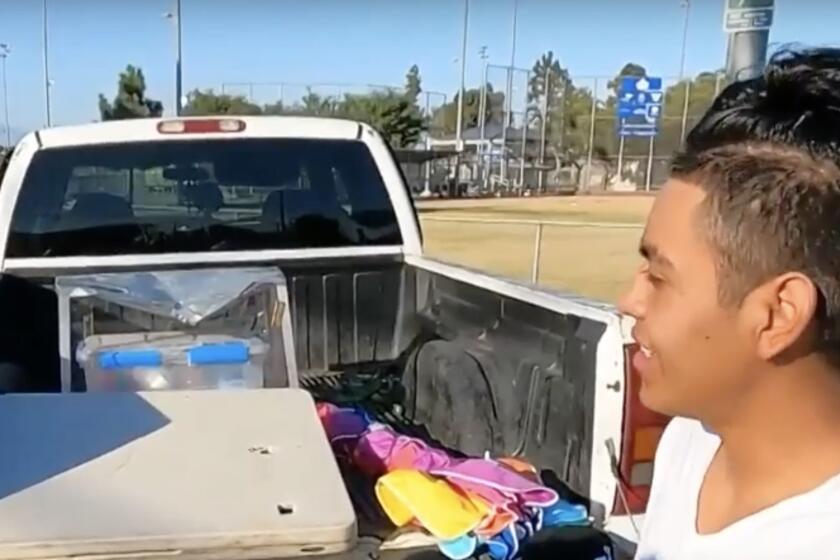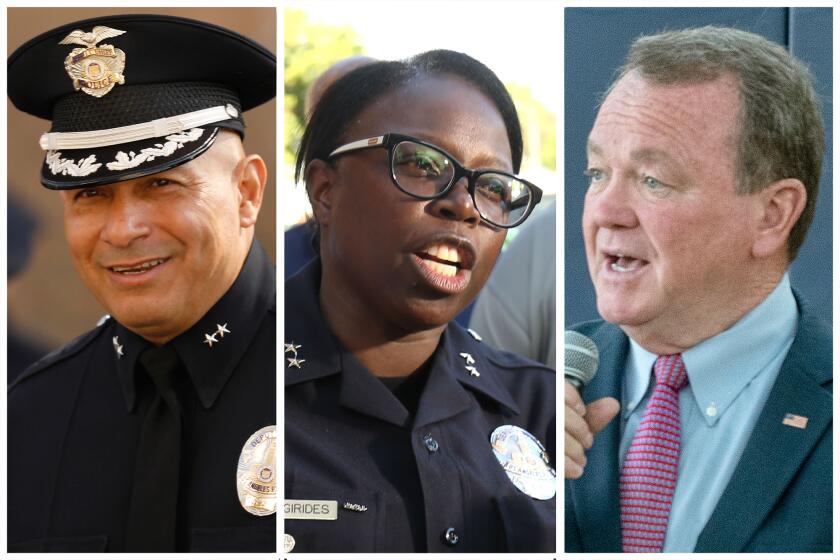Fantasy maps re-imagine public transit
Some transit advocates attend meetings. Others write letters. Some even picket outside subway stations.
Numan Parada makes maps.
At a time when a subway-to-the-sea along Wilshire Boulevard is still far from a reality, he is plotting it on a map anyway.
With the click of a mouse, he puts a notch next to the Getty Center on the rail line he envisions branching off Wilshire Boulevard to follow the 405 Freeway corridor to the San Fernando Valley.
“That’s a good place for a station,” he said. “It’s an obvious traffic generator.”
In the same way, he has mapped out on his computer nearly a dozen other rail stations along light-rail and subway lines that don’t exist, from La Habra to Chatsworth.
He and other amateur cartographers are re-imagining public transportation in Los Angeles by crafting ambitious conceptual maps that depict the county blanketed with an East Coast-style rail network.
Their transit networks look convincingly like the stylized, color-coded visual aids posted in city buses and trains.
But the fantasy maps depict future transportation routes even their creators acknowledge will probably never be built.
“Most people are dismissive of seeing such a big system on paper,” said Parada, 25, whose conceptual map of a future Los Angeles features a nearly omnipresent grid of rail lines (thetransitcoalition.us/ConNP01.htm).
“While I don’t sincerely think a system like this is realistic to build, I think it can give hope,” he said.
Critics say the maps are misguided; rail is too expensive and ill-suited for a city as decentralized as Los Angeles.
But the maps, circulated online and created in the midst of what many are calling an unprecedented level of concern about traffic and public transportation, have also drawn admirers from within the county transportation agency, such as Neil Sadler, lead designer for Metro’s design studio.
“This looks like the London tube map,” he said after examining Parada’s map.
It should, said Parada, of Tujunga. He paid $23 for the Johnston font used on the London Underground map to give his fantasy map an air of authenticity.
Parada started sketching maps of the San Fernando Valley when he was 13, and by the time he was in high school, he had upgraded to using a Paint program on his computer to design small transportation maps.
He now works for the Transit Coalition, a public transportation advocacy group based out of a strip-mall storefront-turned-office in Sylmar.
And though he tries to take the bus whenever he can, he sometimes uses his family’s minivan to get around. He longs for the day when he can replace it with a subway or light-rail ride.
For Damien Goodmon, 25, living in the Boston area as a college student helped him decide to design a conceptual transportation map of L.A. County (www.getlamoving.com).
Goodmon, who grew up in Jefferson Park and Leimert Park, said he saw “most of Los Angeles through the window of a bus,” but mostly because it was an affordable way for his family to get around.
It was as a government student at Harvard University that he said he first experienced a community designed for pedestrians, where public transportation -- especially Boston’s transit system, known as the T -- was effective and used by people of all backgrounds. “I realized the center of that experience was the rail system,” he said.
That led him to take a break from his studies to craft his own transit map last fall. The plan, circulated on public transit blogs and websites, would cost an estimated $31 billion to $38 billion, and add 378 miles of new rail to the existing system, he said.
Transportation experts said such an extensive network would cost several times that.
Goodmon’s neatly designed map shows more than a dozen light-rail and subway lines crisscrossing the county’s major avenues and boulevards. He gleaned many of the ideas from abandoned transportation proposals on the shelves of the Metropolitan Transportation Authority’s library.
Some of his proposed lines include a Vermont Avenue subway from Glendale to San Pedro, a Ventura Boulevard subway from Chatsworth to Pasadena, and a line from Hollywood to Torrance, with a stop just a block from the Leimert Park cafe where he designed the map.
Goodmon’s and Parada’s maps and others like them have played a part in sparking debate over what form public transportation should take in the future.
Not everyone is pro-subway. Transit boosters’ alternate ideas range from the revival of streetcars to dedicated bus lanes. Some champion a monorail system overlaying current freeways.
Only a few corridors in the county are dense enough for rail to be financially realistic, said Genevieve Giuliano, a professor at the USC School of Policy, Planning and Development.
“Instead of trying to overlay 19th century rail technology on a 21st century city, we should be reinventing the bus system, providing exclusive lanes for buses in places where we need the capacity to move people,” she said. “That’s a whole lot cheaper than building billions of dollars of rail.”
Metro’s most forward-looking map shows only a general outline of anticipated transit corridors 20 years in the future, and no specific station locations, said Brad McAllester, head of long-range planning.
“When people look at our maps, they ask us, ‘Are you actually going to build it? Is it funded?’ We actually have to answer that,” he said.
Matt Barrett, head librarian for the Metro library, who helped Goodmon access studies he used to lay out his map, acknowledged that the amateur proposals were fantasies, but suggested that their idealism might help keep government from becoming complacent.
“There’s always been gadflies that come through and have ideas for exactly what we should build and how, but these are young, motivated people who have new tools available to them,” he said. “Technology allows people to make more credible pitches.”
More to Read
Sign up for Essential California
The most important California stories and recommendations in your inbox every morning.
You may occasionally receive promotional content from the Los Angeles Times.











